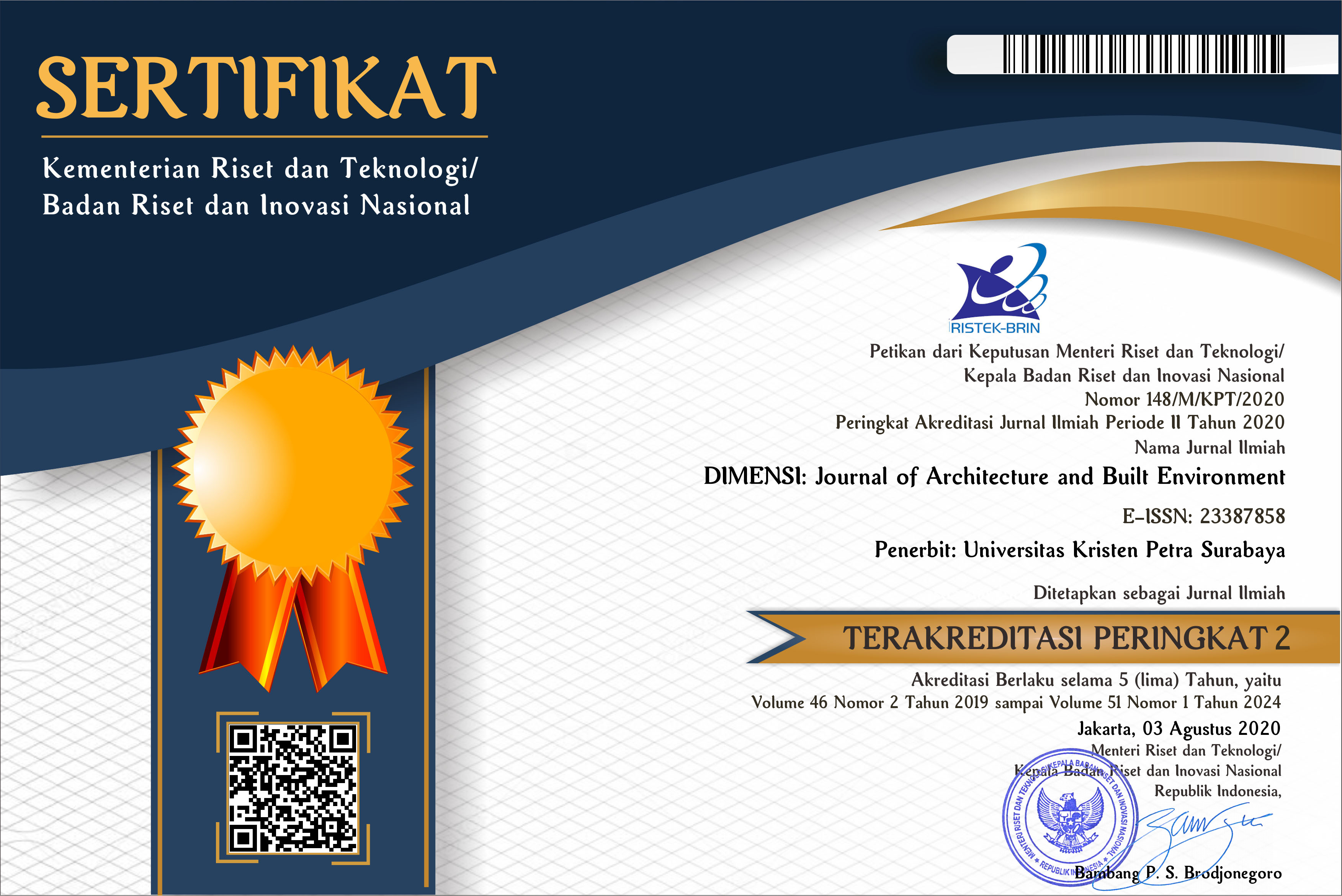POTENSI JERAMI PADI SEBAGAI BAHAN BAKU PANEL AKUSTIK
 :
:
https://doi.org/10.9744/dimensi.35.2.pp.%20183-189
Keywords:
settlement, contour, construction material, climate, typology.Abstract
In the increase of environmental noise, building elements enriched with acoustical properties are significant to serve amenities and healtiness among inhabitants. However, this type of elements which usually consist of high quality materials is much too expensive for most people. The use of paddy straw as the main material to construct acoustical panels is considered in a very early stage of material research. Paddy straw has chareacteristics which is close to acoustical requirements of panels, besides abundance of availability. These benefits will significantly lowered cost production without significantly reduce the quality. Further research to seek the next step of application of paddy straw as acoustic panels is in conduct. Abstract in Bahasa Indonesia : Kebisingan di sekitar bangunan yang terus meningkat serta naiknya permintaan bahan bangunan yang bersifat akustik untuk keperluan studio pribadi telah menyebabkan kebutuhan bahan bangunan yang bersifat akustik juga meningkat. Namun, bahan semacam ini tidak secara merata terjangkau masyarakat. Penggunaan bahan limbah, salah satunya jerami padi sebagai bahan baku pembuatan panel akustik, diharapkan mampu memenuhi kebutuhan bahan bangunan bersifat akustik dengan kualitas tinggi namun tetap dalam harga bersaing. Jerami padi menjadi bahan yang realistis dipertimbangkan sebagai bahan utama karena ketersediaannya yang melimpah dan sifat-sifat fisik batangnya yang secara teoretis mampu menjadi bahan akustik yang baik. Penelitian lanjutan ke arah pemanfaatan limbah jerami padi sebagai bahan baku panel akustik sedang dilaksanakan. Kata kunci: panel akustik, jerami padi.Downloads
Download data is not yet available.
Downloads
Published
2008-07-07
How to Cite
Mediastika, C. E. (2008). POTENSI JERAMI PADI SEBAGAI BAHAN BAKU PANEL AKUSTIK. DIMENSI (Journal of Architecture and Built Environment), 35(2), pp. 183-189. https://doi.org/10.9744/dimensi.35.2.pp. 183-189
Issue
Section
Articles
License
Authors who publish with this journal agree to the following terms:
- Authors retain copyright and grant the journal right of first publication with the work simultaneously licensed under a Creative Commons Attribution License that allows others to share the work with an acknowledgement of the work's authorship and initial publication in this journal.
- Authors are able to enter into separate, additional contractual arrangements for the non-exclusive distribution of the journal's published version of the work (e.g., post it to an institutional repository or publish it in a book), with an acknowledgement of its initial publication in this journal.
- Authors are permitted and encouraged to post their work online (e.g., in institutional repositories or on their website) prior to and during the submission process, as it can lead to productive exchanges, as well as earlier and greater citation of published work (See The Effect of Open Access).


















